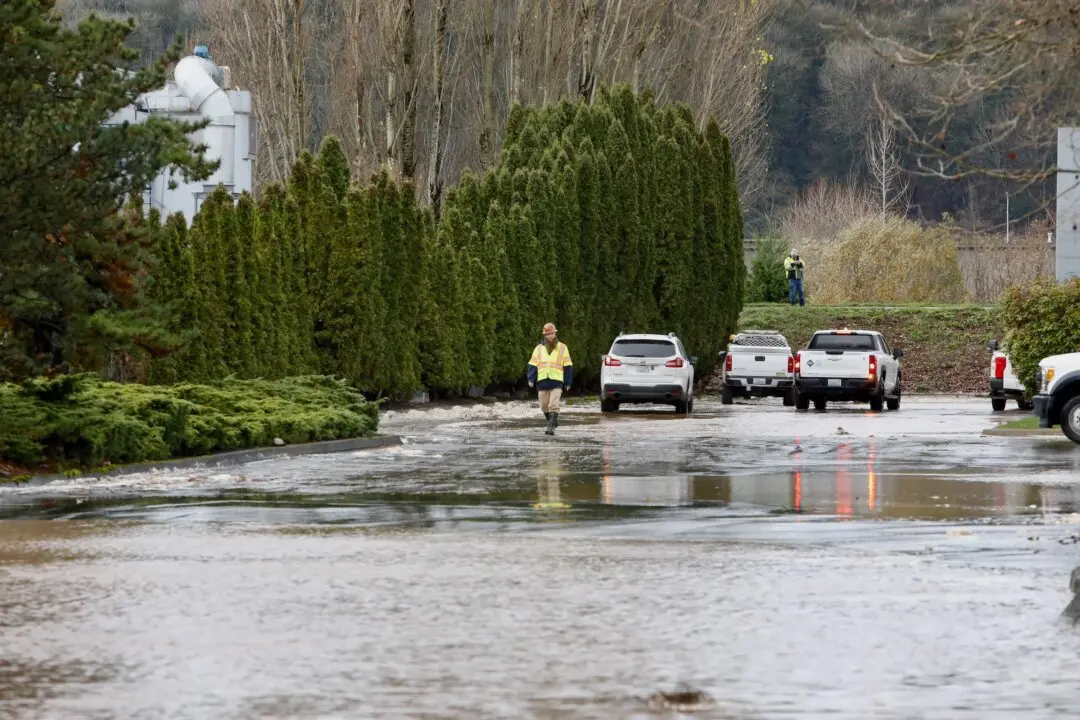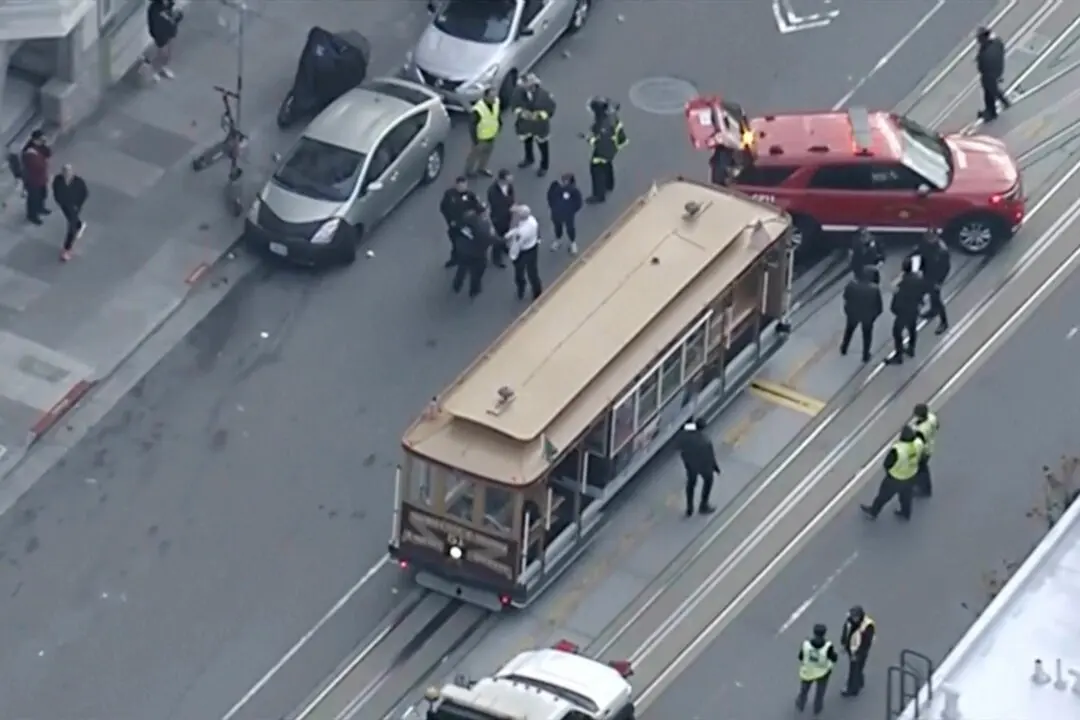ST. LOUIS—As the Mississippi River and its tributaries retreated Saturday from historic winter levels that flooded towns, forced evacuations and killed two dozen people, residents in the St. Louis area were facing a massive cleanup and recovery effort that will likely last weeks.
“The healing process, the restoration process has begun,” Chris Greenhagen, pastor of the Central Baptist Church in Eureka, Missouri, one of the communities hit by flooding along the Meramec River earlier this week, said in a telephone interview.
The flood, fueled by more than 10 inches of rain over a three-day period that began last weekend, is blamed for 24 deaths in Illinois and Missouri.
Water from the Mississippi, Meramec and Missouri rivers largely began receding Friday in the St. Louis area. Two major highways—Interstate 44 and Interstate 55—reopened south of St. Louis on Friday and some evacuees were also allowed then to return home.
On Saturday, while residents took stock of the ruin, Missouri Gov. Jay Nixon said he has asked for a federal emergency declaration to help speed cleanup of the flood debris in the St. Louis area. If the declaration is approved, the Missouri National Guard would manage the debris cleanup program at the state level and coordinate with federal and local governments.
Nixon and Illinois Gov. Bruce Rauner also toured flood-ravaged areas as near-record crest predictions of the Mississippi River and levee breaks threatened more homes.
In Missouri, Noelle Pace said she packed up electronics, some furniture and her 4-year-old son’s clothing and toys and left Pacific on Dec. 28, the day after she received a request to evacuate. She felt lucky to find the damage isolated to her crawl space when she returned for the first time Thursday.
“Everybody around us had catastrophic damage,” Pace said. She said she might not be able to move back for weeks while her landlord replaces soaked insulation.
“It doesn’t feel real yet,” she said.
Illinois Emergency Management Agency spokeswoman Patti Thompson said the state’s flooding death toll increased to nine. Fifteen have died in Missouri.
Rauner encouraged people to respect requests to evacuate.
“This is life threatening,” he told reporters at Carlyle Lake in Clinton County in southern Illinois. It’s not just the water; it’s the temperature. Hypothermia is a big risk to people’s lives.”
The main culprit in the St. Louis region was the Meramec River, a relatively small Mississippi tributary that bombarded communities in the far southwestern reaches of the St. Louis suburbs during the week. Two wastewater treatment plants were so damaged by the floodwaters that raw sewage spewed into the river. Hundreds of people were evacuated in the Missouri communities of Pacific, Eureka, Valley Park and Arnold, where many homes took in water.
William Reynolds said he moved at least $50,000 worth of inventory from his Valley Park store to the second story of his nearby home when the evacuation was ordered. He was still unpacking Saturday after the evacuation was lifted.
Jay Newman, chef at Frederick’s Pub and Grill in Fenton, Missouri, said he was mostly stuck in his Arnold home for two days because of the flooding, which closed most of the area roads.
“It was bad from every direction,” Newman said.
While the worst of the dangerous, deadly winter flood was over in the St. Louis area, the water was slowly make its way south.
In southeast Missouri, the Mississippi crested overnight Friday but not before damaging about two-dozen homes in Cape Girardeau, a community of nearly 40,000 residents that is mostly protected by a flood wall.
“What we'd like people to know is that in Cape Girardeau there have been so many precautions in place that even given the magnitude of this event it’s really gone remarkably well for us,” Molly Hood, Cape Girardeau’s deputy city manager, said Saturday.
Elsewhere, the Illinois River continued to rise Saturday and could near historic crests Tuesday or Wednesday, according to Thomas Spriggs, meteorologist with the National Weather Service in St. Louis.
“It’s still a very significant flood,” he said Saturday. “It’s going to be at major flood stage for the next three days.”
Parts of the South were also in the flood’s path. Moderate Mississippi River flooding is expected in Memphis. The National Weather Service issued a flood advisory for the Cumberland River at Dover, Tennessee, through Monday evening.
Minor flooding along the Ohio River was affecting the Kentucky cities of Owensboro and Paducah, and the crest wasn’t expected until Thursday.





